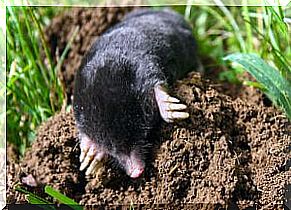Rodent-borne Diseases

Rodents, in general, are very clean and organized animals, but it is difficult to change the bad reputation of rats that live in the depths of cities. Regardless, it is important to know the diseases transmitted by rodents, as we share more space with them than we think.
The best known, which are the most common in cities and inhabited areas, are rats and mice, but there are other rodents that can also transmit diseases to humans, such as marmots, squirrels or moles.
Possible rodent diseases can be transmitted to humans through parasites that pass to people through direct contact, inhalation of vapors from urine or feces, bites, inhalation of solid particles in the air, scratches by the animals themselves or by contaminated food.

Most common rodent-borne diseases
There are many rodent-borne diseases that can affect us, but let’s look at the three most relevant. The goal is to provide information so that it is possible to detect them in time and reduce the effects they can have on us.
leptospirosis
Caused by a bacterium of the Leptospira genus , this disease can enter our body through the urine of rodents, although there are also some farm animals that have it.
Direct contact with the urine of an infected rodent may be enough for the infection to occur, but more commonly, the disease is contracted by touching soil, food or water that has been infected by the urine of these small animals.
Leptospirosis is more common in areas with a hot climate and high humidity, as it is the perfect environment for the proliferation of bacteria. You won’t notice the contagion until about seven days later. However, this disease can manifest up to two weeks after being contracted.
The symptoms of this illness are quite similar to those of the flu: vomiting, nausea, headaches and muscle pain, nausea or diarrhea. To fight it, you need to take antibiotics in order to kill the bacteria in a few days.
Hantavirus
Among rodent-borne diseases, hantavirus is one of the most feared and is caused by hantavirus. Field mice generally infect humans through their feces, urine and saliva through their bites.

Among the species that most spread this type of disease are mice and moles. In Europe, moles are the ones that most carry this virus, which can enter our bodies through contaminated food or simply by breathing in areas where these animals are commonly found.
The symptoms we develop when contracting this virus are also flu-like, with vomiting and diarrhea being the main manifestations. In Asia, this virus causes real damage, but in Europe it does not reach alarming levels of contagion, and countries like Germany, Greece, Belgium, Finland or the Netherlands report more cases of infections per year.
toxoplasmosis
This disease is caused by a protozoan that some rodents can carry, called Toxoplasma gondii. The main contagion of this disease to humans comes from cats, but this animal is nothing more than an intermediary between rodents and us.

It is estimated that 22% of the US population has already suffered from this disease, but in most cases it has had no consequences that need to be taken into account, unless the person belongs to the high-risk group of people: elderly, children and pregnant women.
In the latter case, toxoplasmosis can cause miscarriage or major complications to the fetus, while in other people potentially sensitive to the disease it can cause vomiting, swollen lymph nodes or fever.








